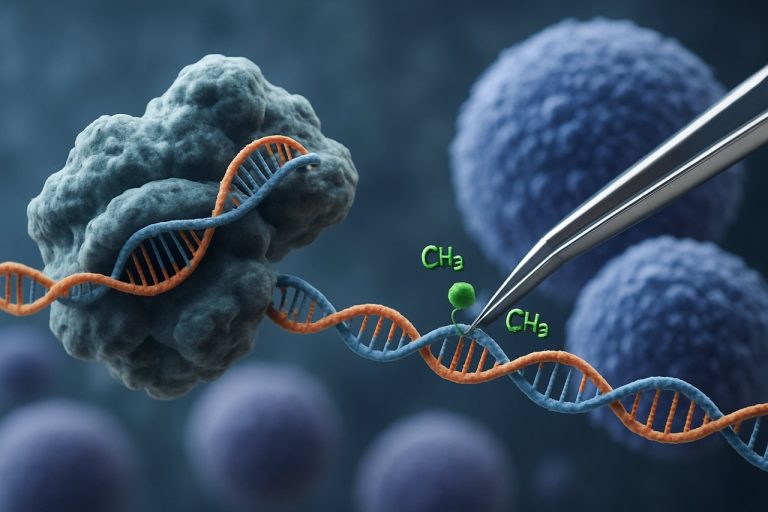
Unlocking the Power of the JVT Standard: How the Joint Video Team Transformed Video Compression Technologies. Discover the Innovations Behind Modern Streaming and Broadcasting.
- Introduction to the JVT Standard: Origins and Purpose
- Key Technical Innovations of JVT in Video Compression
- Comparison: JVT vs. Previous Video Compression Standards
- Impact of JVT on Streaming, Broadcasting, and Storage
- Adoption and Industry Applications of the JVT Standard
- Challenges and Limitations of the JVT Approach
- Future Directions: JVT’s Influence on Next-Generation Codecs
- Conclusion: The Lasting Legacy of the Joint Video Team
- Sources & References
Introduction to the JVT Standard: Origins and Purpose
The JVT (Joint Video Team) standard represents a pivotal collaboration in the evolution of video compression technologies. Established in 2001, the JVT was a joint initiative between the ITU-T Video Coding Experts Group (VCEG) and the ISO/IEC Moving Picture Experts Group (MPEG), two leading international standardization bodies. The primary objective of this partnership was to develop a unified video coding standard that would significantly outperform previous standards in terms of compression efficiency, flexibility, and application range. This effort culminated in the creation of the H.264/AVC (Advanced Video Coding) standard, which has since become the foundation for a vast array of digital video applications, from streaming media to Blu-ray discs and broadcast television.
The origins of the JVT standard can be traced to the growing demand for higher quality video at lower bitrates, driven by the proliferation of digital media and the internet. Prior to JVT, separate standards developed by VCEG and MPEG often led to fragmentation and compatibility issues. By combining their expertise, the JVT aimed to harmonize the strengths of both groups, resulting in a standard that offered improved compression performance, robust error resilience, and support for a wide range of network environments and devices. The collaborative process was marked by rigorous technical evaluation and consensus-building, ensuring that the resulting standard would meet the diverse needs of the global multimedia industry. The JVT’s work has been recognized as a milestone in video technology, setting the stage for subsequent advancements in video compression.
For further details on the JVT and its standardization process, refer to the official documentation from the International Telecommunication Union and the International Organization for Standardization.
Key Technical Innovations of JVT in Video Compression
The JVT (Joint Video Team) standard, formally known as H.264/AVC, introduced several groundbreaking technical innovations that significantly advanced video compression efficiency and quality. One of the most notable innovations is the use of variable block-size motion compensation, which allows the encoder to adaptively select block sizes ranging from 16×16 down to 4×4 pixels. This flexibility enables more precise motion estimation, reducing redundant information and improving compression performance, especially for complex or high-motion video sequences.
Another key innovation is the adoption of multiple reference frames for motion prediction. Unlike previous standards that typically used a single reference frame, JVT allows the encoder to reference several past and future frames, enhancing prediction accuracy and further reducing bitrates without sacrificing visual quality. Additionally, the standard introduced an advanced entropy coding technique called Context-Adaptive Binary Arithmetic Coding (CABAC), which dynamically adjusts coding parameters based on local context, resulting in more efficient data representation compared to traditional methods.
JVT also implemented in-loop deblocking filtering, which smooths block edges within the decoding loop to minimize visible artifacts and improve subjective video quality. Furthermore, the standard supports flexible macroblock ordering and robust error resilience tools, making it suitable for a wide range of applications, from broadcast to mobile streaming. Collectively, these innovations have established JVT as a foundational technology in modern video compression, enabling high-quality video delivery at lower bitrates and across diverse platforms. For further technical details, refer to the International Telecommunication Union and the International Organization for Standardization.
Comparison: JVT vs. Previous Video Compression Standards
The JVT (Joint Video Team) standard, formally known as H.264/AVC, marked a significant advancement over previous video compression standards such as MPEG-2 and H.263. One of the most notable improvements is its compression efficiency; JVT can deliver equivalent video quality at roughly half the bit rate required by MPEG-2, making it highly suitable for bandwidth-constrained applications like streaming and mobile video. This efficiency is achieved through advanced techniques such as variable block-size motion compensation, multiple reference frames, and in-loop deblocking filtering, which were either absent or less sophisticated in earlier standards.
In terms of flexibility, JVT supports a wide range of applications, from low-bitrate mobile video to high-definition broadcasting, thanks to its scalable profiles and levels. Previous standards, particularly MPEG-2, were primarily optimized for broadcast and storage, lacking the adaptability required for emerging internet and mobile use cases. Furthermore, JVT introduced improved error resilience features, which enhance video quality over unreliable networks—a critical advantage over H.263 and MPEG-2.
Another key distinction lies in interoperability and industry adoption. JVT quickly became the dominant standard for Blu-ray Discs, digital television, and online streaming platforms, whereas earlier standards were often limited to specific domains. The collaborative development process between ITU-T and ISO/IEC ensured broad industry support and rapid integration into hardware and software ecosystems (International Telecommunication Union, International Organization for Standardization).
Impact of JVT on Streaming, Broadcasting, and Storage
The JVT (Joint Video Team) standard, formally known as H.264/AVC, has had a transformative impact on streaming, broadcasting, and storage of video content. By introducing advanced compression techniques such as variable block-size motion compensation, multiple reference frames, and in-loop deblocking filtering, JVT enabled significant reductions in bitrates while maintaining high visual quality. This efficiency has been crucial for the proliferation of video streaming services, allowing platforms to deliver high-definition content over limited bandwidth connections, thus expanding accessibility and improving user experience worldwide.
In broadcasting, the adoption of JVT facilitated the transition from analog to digital television, supporting the delivery of HD and even 4K content within existing spectrum allocations. Broadcasters could transmit more channels or higher-quality video without requiring additional bandwidth, which was a key factor in the global rollout of digital terrestrial television and satellite services. The standard’s robustness and flexibility also made it suitable for a wide range of applications, from mobile TV to professional studio production.
For storage, JVT’s compression efficiency enabled the archiving and distribution of large video libraries on physical media such as Blu-ray Discs, as well as in cloud-based repositories. This not only reduced storage costs but also facilitated faster uploads, downloads, and sharing of video files. The widespread adoption of JVT across these domains is reflected in its endorsement by major industry bodies, including the International Telecommunication Union (ITU-T) and the International Organization for Standardization (ISO/IEC), cementing its role as a foundational technology in modern digital video ecosystems.
Adoption and Industry Applications of the JVT Standard
The JVT (Joint Video Team) standard, formally known as H.264/AVC, has achieved widespread adoption across diverse sectors due to its superior compression efficiency and flexibility. Its ability to deliver high-quality video at significantly reduced bitrates compared to previous standards has made it the backbone of modern digital video applications. In the broadcast industry, H.264/AVC is the dominant format for terrestrial, satellite, and cable television, enabling the transmission of high-definition (HD) and even ultra-high-definition (UHD) content within limited bandwidth constraints. Streaming platforms such as YouTube and Netflix rely heavily on the JVT standard to provide smooth, high-quality video experiences to millions of users worldwide, regardless of device or network conditions.
The standard’s influence extends to video conferencing and real-time communication, where its low-latency profiles are crucial for interactive applications like Zoom, Microsoft Teams, and WebRTC-based services. In the realm of physical media, Blu-ray Discs utilize H.264/AVC to store HD movies efficiently. Furthermore, the standard is integral to surveillance systems, mobile video capture, and video sharing on social media platforms, thanks to its scalability and support for a wide range of resolutions and bitrates. The broad industry support for the JVT standard is reflected in its inclusion in international recommendations and specifications, such as those from the International Telecommunication Union (ITU-T) and the International Organization for Standardization (ISO), ensuring interoperability and long-term viability across the global video ecosystem.
Challenges and Limitations of the JVT Approach
The JVT (Joint Video Team) standard, which culminated in the development of H.264/AVC, marked a significant advancement in video compression technologies. However, its approach is not without challenges and limitations. One of the primary concerns is the computational complexity associated with both encoding and decoding processes. The sophisticated algorithms and multiple prediction modes, while improving compression efficiency, demand substantial processing power and memory, making real-time encoding on resource-constrained devices difficult. This complexity can also lead to increased power consumption, which is a critical issue for mobile and embedded systems.
Another limitation is the patent and licensing landscape surrounding the JVT standard. The involvement of numerous stakeholders and proprietary technologies has resulted in a complex licensing environment, potentially hindering widespread adoption and increasing costs for manufacturers and service providers. This has led some organizations to seek alternative, royalty-free codecs for certain applications.
Interoperability and backward compatibility also pose challenges. As the JVT standard evolved, ensuring seamless integration with legacy systems and other standards required additional effort and sometimes resulted in suboptimal performance or increased implementation complexity. Furthermore, while H.264/AVC remains widely used, newer standards such as HEVC and VVC offer improved compression efficiency, highlighting the limitations of the JVT approach in keeping pace with the growing demands for higher resolutions and lower bitrates.
For more detailed information, refer to the official documentation from the International Telecommunication Union and the International Organization for Standardization.
Future Directions: JVT’s Influence on Next-Generation Codecs
The legacy of the JVT (Joint Video Team) standard, most notably embodied in H.264/AVC, continues to shape the trajectory of next-generation video codecs. JVT’s collaborative approach, uniting the ITU-T Video Coding Experts Group (VCEG) and the ISO/IEC Moving Picture Experts Group (MPEG), established a model for international cooperation that subsequent codec development efforts have emulated. The technical innovations introduced by JVT—such as advanced motion compensation, variable block-size transforms, and in-loop deblocking filters—have become foundational elements in the design of newer standards like H.265/HEVC and H.266/VVC. These successors build upon JVT’s groundwork, pushing for even greater compression efficiency and adaptability to diverse applications, from ultra-high-definition streaming to low-latency video conferencing.
Looking forward, JVT’s influence is evident in the ongoing development of codecs that prioritize not only compression performance but also computational scalability and hardware friendliness. The collaborative framework pioneered by JVT has inspired broader industry participation in standardization, as seen in the formation of alliances such as the Alliance for Open Media, which developed the AV1 codec. Furthermore, the emphasis on interoperability and backward compatibility, hallmarks of the JVT process, remain central to codec evolution, ensuring smooth transitions for content providers and end-users alike. As video consumption continues to surge and new use cases emerge, the principles and methodologies established by the JVT standard will remain integral to the advancement of video compression technologies worldwide (International Telecommunication Union, Moving Picture Experts Group).
Conclusion: The Lasting Legacy of the Joint Video Team
The legacy of the Joint Video Team (JVT) in the realm of video compression technologies is both profound and enduring. By uniting the expertise of the ITU-T Video Coding Experts Group (VCEG) and the ISO/IEC Moving Picture Experts Group (MPEG), the JVT developed the H.264/AVC standard, which set new benchmarks for compression efficiency, video quality, and interoperability. This collaborative achievement not only revolutionized digital video delivery across broadcast, streaming, and storage platforms but also established a model for international standardization efforts. The widespread adoption of H.264/AVC in everything from Blu-ray Discs to internet streaming services and mobile devices underscores its pivotal role in shaping the modern media landscape.
Moreover, the JVT’s work laid the groundwork for subsequent advancements in video coding, influencing the development of later standards such as HEVC (H.265) and VVC (H.266). The principles of open collaboration, rigorous technical evaluation, and global consensus pioneered by the JVT continue to guide the evolution of video compression technologies. As digital content consumption grows and new applications emerge, the foundational contributions of the JVT remain central to enabling efficient, high-quality video experiences worldwide. The enduring relevance of their work is reflected in ongoing support and updates from organizations like the ITU-T Study Group 16 and the ISO/IEC JTC 1/SC 29, ensuring that the JVT’s legacy will persist well into the future of digital media.
Sources & References
- International Telecommunication Union
- International Organization for Standardization
- Moving Picture Experts Group



